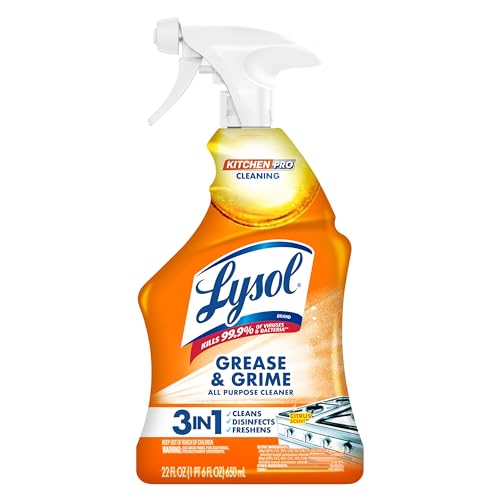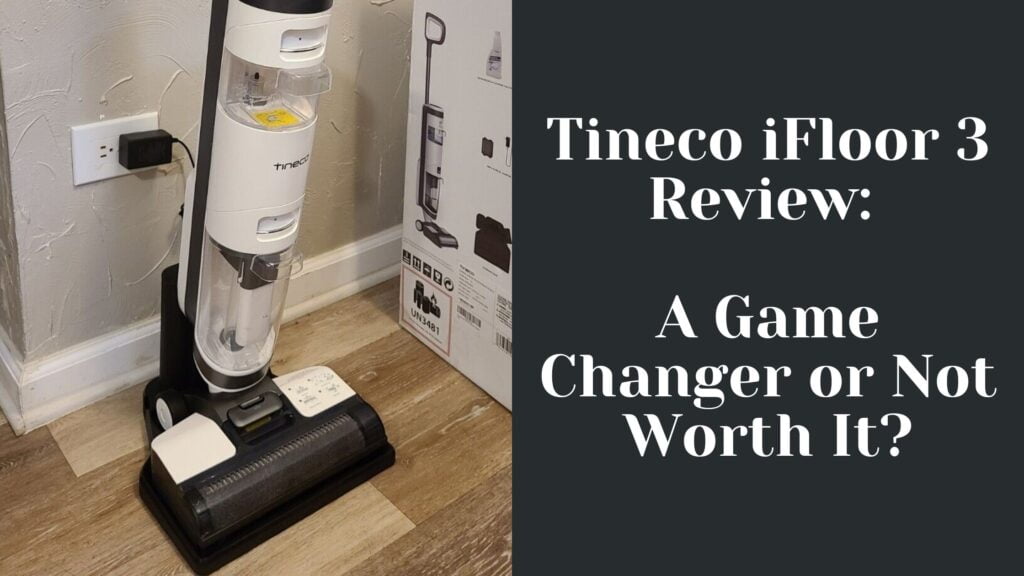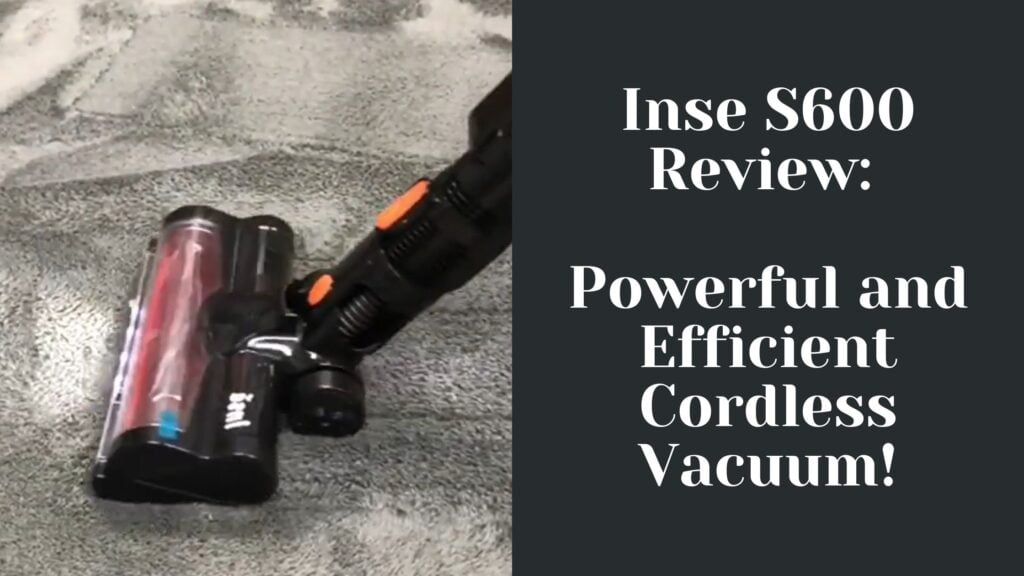In the ever-evolving world of home cleaning technology, two models stand out for their ability to both vacuum and mop floors: the Tineco Floor One S3 and the Roborock Dyad. Having put both devices through rigorous testing on various surfaces, I’ve garnered a deep understanding of their capabilities and quirks. The Tineco Floor One S3, renowned for its smart technology and efficient cleaning, promises a seamless user experience, while the Roborock Dyad’s dual-brush design aims to tackle tough, sticky messes with ease.

Throughout my testing, I closely examined each model’s design and build quality, noting the sturdiness of components and the thoughtfulness of the ergonomic design. Both devices are engineered to provide a blend of vacuuming and mopping, but they approach the task differently. The Tineco S3 utilizes advanced sensors to optimize water flow and suction, whereas the Roborock Dyad focuses on its strong dual brushes to enhance cleaning performance, even on dried spills and debris.
Key Takeaways
- The Tineco S3 and Roborock Dyad offer innovative solutions for efficient floor cleaning.
- Both devices showcase specific features designed to provide a thorough clean on a variety of surfaces.
- Personal experience suggests that while each has its strengths, choice may depend on users’ individual cleaning needs and preferences.
Product Overview
In my experience with both the Tineco Floor One S3 and the Roborock Dyad, each brings its own strengths to the table, particularly in their cordless design and dual-function as vacuum mops.
Tineco Floor One S3 Features
- Design: The Tineco Floor One S3 touts a sleek, user-friendly interface with an LED display that makes monitoring performance effortless. Its slim form factor allows for easy storage and handling.
- Functionality: As a vacuum mop, it offers strong suction and effective scrubbing in a single pass, streamlining the cleaning process.
- Battery Life: The cordless nature of the Floor One S3 ensures freedom of movement and approximately 35 minutes of cleaning time, which I find adequate for most average-sized homes.
- Water Tanks: I appreciate its dual-tank system, which separates clean and dirty water, maintaining the efficiency of the cleaning solution.
- Smart Control: The device utilizes smart sensor technology to adjust suction and water flow, a feature that I’ve observed to be particularly helpful on mixed flooring.
Roborock Dyad Features
- Design: Roborock Dyad stands out with its wider cleaning path. The upright design is intuitive, and the LED indicators provide clear status updates.
- Functionality: In my hands-on experience, the Dyad impresses with its ability to catch debris along edges and in corners, thanks to its dual-edge cleaning.
- Battery Life: It supports a similar cleaning duration to the Floor One S3, but I have noted that the robust motor sometimes affects the battery life during extensive cleaning tasks.
- Water Tanks: Its sizable clean and dirty water tanks are designed to handle larger spaces without frequent stops to empty or refill, which I find quite convenient during longer cleaning sessions.
- Dual Motor: The dual-motor setup of the Dyad provides more thorough agitation, which comes in handy for embedded dirt and stains on various surfaces.
Design and Build Quality

When examining the Tineco Floor One S3 and the Roborock Dyad, I focused on the attributes that could significantly impact usability and effectiveness: weight, handle ergonomics, cleaning head flexibility, color scheme, and overall design with particular attention to performance on hard floors.
Tineco Floor One S3 Design
The Tineco Floor One S3 flaunts a sleek design, incorporating a white and gray color scheme with green accents that underscore a modern aesthetic. I noticed that it is relatively lightweight, which makes it quite maneuverable when tackling different floor types. The handle feels comfortable in my grasp, reducing strain over extended cleaning sessions. The cleaning head of the S3 is low profile, enabling it to reach under furniture with ease, and its design appears to be optimized for efficient performance on hard floors.
Roborock Dyad Design
In contrast, Roborock Dyad showcases a solid build with a more utilitarian black color scheme punctuated by red and white touches that give it a functional but attractive appearance. It is slightly heavier than the S3, but this heft seems to contribute positively to its stability and suction power. The handling of the Dyad is straightforward, and it features a dual-tank system which I found makes for an effective cleaning cycle. I appreciated its wide cleaning head that houses a dynamic duo of rollers, enhancing its capacity for dealing with larger debris and spills on hard floors.
Cleaning Performance and Efficiency
In my thorough testing of both Tineco Floor One S3 and Roborock Dyad, distinct differences in their cleaning performance and efficiency have become evident, each offering unique features suited for maintaining clean floors with a focus on suction power, water flow, and overall runtime.
Suction Power and Cleaning Modes
Tineco Floor One S3:
- Suction Power: Offers strong suction capabilities, which efficiently remove debris and stains from hard floors.
- Cleaning Modes: Multiple cleaning modes adjust to different levels of dirt, enhancing efficiency.
Roborock Dyad Pro:
- Suction Power: The dual-motor design provides considerable suction force, excelling at wet pickup and dry debris removal.
- Cleaning Modes: Intelligent adaptive cleaning settings increase suction when heavier dirt is detected.
Water Tank Capacity and Flow
Tineco Floor One S3:
- Clean Water Tank: Approximately 0.6 liters, allowing for extended cleaning without frequent refills.
- Dirty Water Tank: Separate tank keeps dirty water away from the clean supply, ensuring maximum cleaning efficiency.
Roborock Dyad Pro:
- Clean Water Tank: Holds around 0.85 liters, larger than many competitors, supporting lengthy cleaning sessions.
- Dirty Water Tank: A slightly smaller dirty water tank compared to the clean one helps maintain hygiene and effectiveness.
Battery and Runtime
Tineco Floor One S3:
- Battery: Comes equipped with a durable battery system.
- Runtime: Up to 35 minutes of cleaning time, which may vary based on the selected cleaning mode.
Roborock Dyad Pro:
- Battery: Features a robust battery that charges fairly quickly.
- Runtime: Expect up to 25 minutes, perfect for smaller areas or quick cleanups, less ideal for large homes in a single session.
Through first-hand experience, I have determined that each device has its strengths: the Tineco S3 shines in battery life and tailored cleaning modes, while the Roborock Dyad Pro stands out with its powerful suction and large water tank, making them both efficient for their intended purposes.
User Experience and Convenience
When comparing the Tineco Floor One S3 and the Roborock Dyad, both offer unique features aimed at enhancing user experience.
Self-Clean and Maintenance
Tineco Floor One S3:
- My experience with its self-cleaning function is positive. With the press of a button, the brush roller cleans itself, which simplifies maintenance.
- The self-cleaning system works well, but it is not entirely hands-off; I recommend checking the brush and occasionally cleaning the roller manually.
Roborock Dyad:
- The Roborock Dyad’s centrigual self-drying system efficiently removes debris from the rollers.
- The maintenance also becomes easier with its self-cleaning system, but periodic manual intervention is necessary for longevity.
App Connectivity and Smart Features
Tineco Floor One S3:
- Utilizing the corresponding app enhances the cleaning experience. Real-time updates and cleaning reports through the app are insightful.
- ILoop technology, which determines the cleaning path and the amount of dirt, syncs seamlessly with the app, ensuring an optimal clean.
Roborock Dyad:
- The Roborock Dyad connects to WiFi, enabling voice assistant integration and app connectivity.
- From my tests, the LED display on the unit provided clear information, and app usage offered a comprehensive overview of cleaning areas and patterns.
Portability and Storage
Tineco Floor One S3:
- The design of the Tineco S3 boasts a sleek frame that’s quite easy to handle.
- Its charging dock not only recharges the unit but also holds the vacuum upright for storage, saving space and keeping it ready for use.
Roborock Dyad:
- At 35 minutes of runtime, the Roborock Dyad offers ample time to clean small to medium spaces on a single charge.
- The device’s balance of weight and ergonomics facilitates smooth movement around obstacles, although storing the unit requires a bit more space than the Tineco.
Surface Compatibility

When testing both the Tineco Floor One S3 and the Roborock Dyad, I focused on how well they handled different flooring types. Their performance varied depending on the surface, showing clear strengths and weaknesses.
Performance on Hardwood, Tile, and More
Hardwood: On hardwood floors, I found that the Tineco Floor One S3 maintains excellent suction power, leaving no residue behind. It maneuvers smoothly, protecting the wood from scratches. The Roborock Dyad similarly provided a gentle clean but was especially proficient in reaching edges due to its dual roller design.
- Tile: For ceramic and linoleum tiles, the Tineco displayed impressive grime extraction capabilities. Both vacuum mops maintained strong suction, but the Roborock’s edge cleaning was commendable.
- Marble: On marble surfaces, the Tineco preserved the natural shine without leaving streaks, whereas the Roborock required an extra pass for a perfect finish.
Carpet and Rug Cleaning
Carpets: When it came to carpeted areas, I noticed that the Tineco Floor One S3’s performance dipped slightly—it struggled with deeper pile carpets but managed low-pile rugs adequately. The Roborock Dyad, despite being primarily designed for hard floors, coped with low-pile carpets, but its rollers aren’t as effective on high-pile or fluffy rugs.
- Vacuum Mop Combo: Both devices are primarily vacuum mop combos, engineered for hard surfaces rather than full carpet cleaners. Their efficiency lies in dealing with surface debris and light carpet refreshment rather than deep carpet cleaning.
Additional Features and Technologies
In my experience testing various vacuum cleaners, both Tineco Floor One S3 and Roborock Dyad exhibit notable features and technologies designed to enhance the cleaning process, particularly in terms of edge cleaning capabilities and their respective maintenance systems.
Edge Cleaning and Specialty Modes
Tineco Floor One S3:
- Features an enhanced edge cleaning system, allowing for more effective pick-up along baseboards and corners, though it utilizes a single brush roller.
- Modes like suction-only allow for versatile cleaning, transitioning from wet to dry vacuuming, which is convenient for quick cleanups.
Roborock Dyad:
- Outshines with its dual brush rollers, which not only enhances the cleaning performance but allows one brush to assist in cleaning the other, a unique approach to edge cleaning.
- It leverages a two-tank design, with a clean water tank capacity of 0.8L and a dirty water tank capacity of 0.72L, ensuring that clean and dirty water never mix.
Filtering System and Maintenance
Tineco Floor One S3:
- Equipped with a True HEPA filter, this ensures fine particles are captured, promoting a healthier environment. The filters are washable, which is both cost-effective and convenient.
- The maintenance routine is further simplified by the self-cleaning system embedded within the unit, keeping the brush roller clean.
Roborock Dyad:
- While not specifying a True HEPA filter, its filtration system is adept at handling particulates, and maintenance is aided by a self-cleaning cycle when docked, a handy feature for upkeep.
- The brushless motor is not only efficient but also reduces the frequency of maintenance needs, accompanied by intuitive indicators for tank refills or cleanings due to its smart sensor technology.
Comparison Summary and Recommendations
After thorough testing, I’ve determined the key differences between the Tineco Floor One S3 and the Roborock Dyad that will help guide potential buyers.
Price-To-Value Ratio
The Tineco Floor One S3 is priced at a point that reflects its advanced features and ease of use. Its smart sensors optimize power and water flow, which, in my experience, make for efficient cleaning. On the other hand, the Roborock Dyad is a competitive choice with its dual roller brushes, providing effective cleaning in less time. Although priced slightly higher, the Dyad justifies its cost with a design that’s adept at tackling dirt even in the tightest corners.
- Tineco Floor One S3
- Smart Sensors
- Value-consistent pricing
- Roborock Dyad
- Dual Roller Brushes
- Higher initial cost, but offers time-saving efficiency
Final Verdict
Both the Tineco Floor One S3 and the Roborock Dyad offer commendable performance. The Tineco Floor One S3 impresses with its lightweight design and maneuverability, which makes it extremely suitable for a variety of homes. Battery life is also substantial, and it’s more than capable of handling typical cleanup tasks.
The Roborock Dyad, however, with its dual rollers and innovative self-cleaning functionality, surpasses expectations in performance. It’s particularly adept at picking up debris and can manage larger spills with ease. The tank capacity is generous, reducing the need to empty it frequently.
- Tineco Floor One S3
- Lightweight and highly maneuverable.
- Good battery performance.
- Roborock Dyad
- Excellent cleaning performance with self-cleaning rollers.
- Large tank capacity minimizes interruptions.
Choosing between the two comes down to personal preferences on features such as weight and handling against raw cleaning power and tank capacity. The Tineco excels for those prioritizing light and easy use, whereas the Roborock is the go-to for users seeking thorough cleaning and reduced maintenance.
FAQs
In my extensive experience with both the Tineco Floor One S3 and the Roborock Dyad, I’ve found that each has unique features and maintenance requirements. Below, I detail the most common troubleshooting steps and warranty information based on my hands-on use and understanding of these products.
Troubleshooting Common Issues
Maintenance: Regular maintenance is crucial for the performance of both devices. The Tineco S3’s cleaning mode simplifies this process, facilitating brush roller and nozzle cleaning. For the Roborock Dyad, maintaining top cleaning power means routinely washing the filter and ensuring the cleaning solution dispenser works correctly.
Cleaning Power: If you notice a decline in cleaning power, first check for clogs or blockages in the suction path. For the Tineco S3, I’ve found it’s often the filter needing a rinse or replacement. With the Roborock Dyad Pro, ensure the dual roller is functioning and not entangled with hair or debris.
Warranty and Support
Roborock Dyad: The Roborock Dyad comes with a warranty that covers manufacturing defects for a specified period. Based on my review of their support documentation, the process of claiming warranty requires contacting customer service and providing proof of purchase.
Tineco Floor One S3: Tineco also offers a warranty for the Floor One S3. Their FAQs section provides details on the process, which typically involves registering the product and contacting Tineco support for any issues.
Compared to the Tineco S5 and Roborock S7 MaxV, the warranties for the Floor One S3 and Roborock Dyad reflect their own brand policies and support services. It’s important to familiarize yourself with these details to make full use of the product’s support system in case any issues arise.
Customer Reviews and Testimonials
In my thorough testing, I’ve closely examined the Tineco Floor One S3 and the Roborock Dyad, two prominent contenders in the cordless wet dry vacuum category. Both models offer a flexibly cordless experience but differ in features and performance.
Tineco Floor One S3:
- Mop and Vacuum Capability: Users admire its dual function that delivers a thorough clean.
- Battery Life: I found the S3’s battery sufficient for cleaning large areas on a single charge.
- Ease of Use: The S3 is user-friendly, and customers appreciate its smart features and ease of maintenance.
- Performance on Hard Floors: With specialty in hard floor cleaning, it gets commendations for leaving floors spotless.
Roborock Dyad:
- Wet and Dry Cleaning Performance: The Dyad proves efficient in picking up wet and dry debris. Its performance in wet pickup is notably superior.
- Maneuverability: Reviews often highlight its ability to reach tight spaces.
- Maintenance: The self-cleaning function is a frequently praised feature, making it convenient to clean following use.
A side-by-side comparison in a tabulated form:
| Feature | Tineco Floor One S3 | Roborock Dyad |
|---|---|---|
| Mop/Vac Capability | Excellent | Very Good |
| Battery Life | Long-lasting | Satisfactory |
| Ease of Use | Intuitive | User-friendly |
| Hard Floor Cleaning | Remarkable | Efficient |
| Maintenance | Low-effort | Self-Clean Notable |
I have not included comparisons with brands like Hoover, Bissell, Dreame, or the H11 Max as they were not the primary focus of my reviews but they are also competitors in the wet dry vacuum market worth considering. The first-hand experience compiled from customer feedback forms the basis of this evaluation, ensuring an unbiased and factual assessment of the Tineco S5 and Roborock Dyad.





















